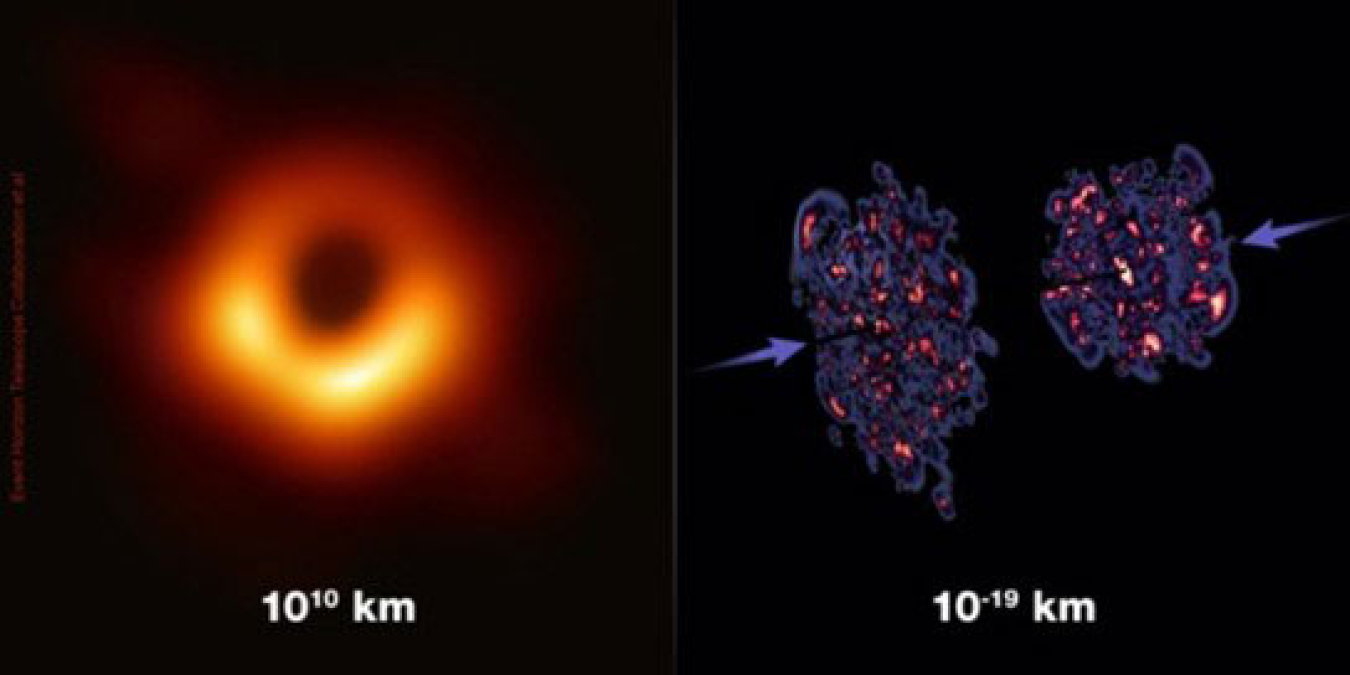
Images courtesy of the Event Horizon Telescope Collaboration (left) and Brookhaven National Laboratory (right).
Physicists show that black holes and dense state of gluons–the ‘glue’ particles that hold nuclear matter together–share common features. Atomic nuclei accelerated close to the speed of light become dense walls of gluons known as color glass condensate (CGC). Recent analysis shows that CGC shares features with black holes, enormous conglomerates of gravitons that exert gravitational force across the universe...
Read More








Recent Comments